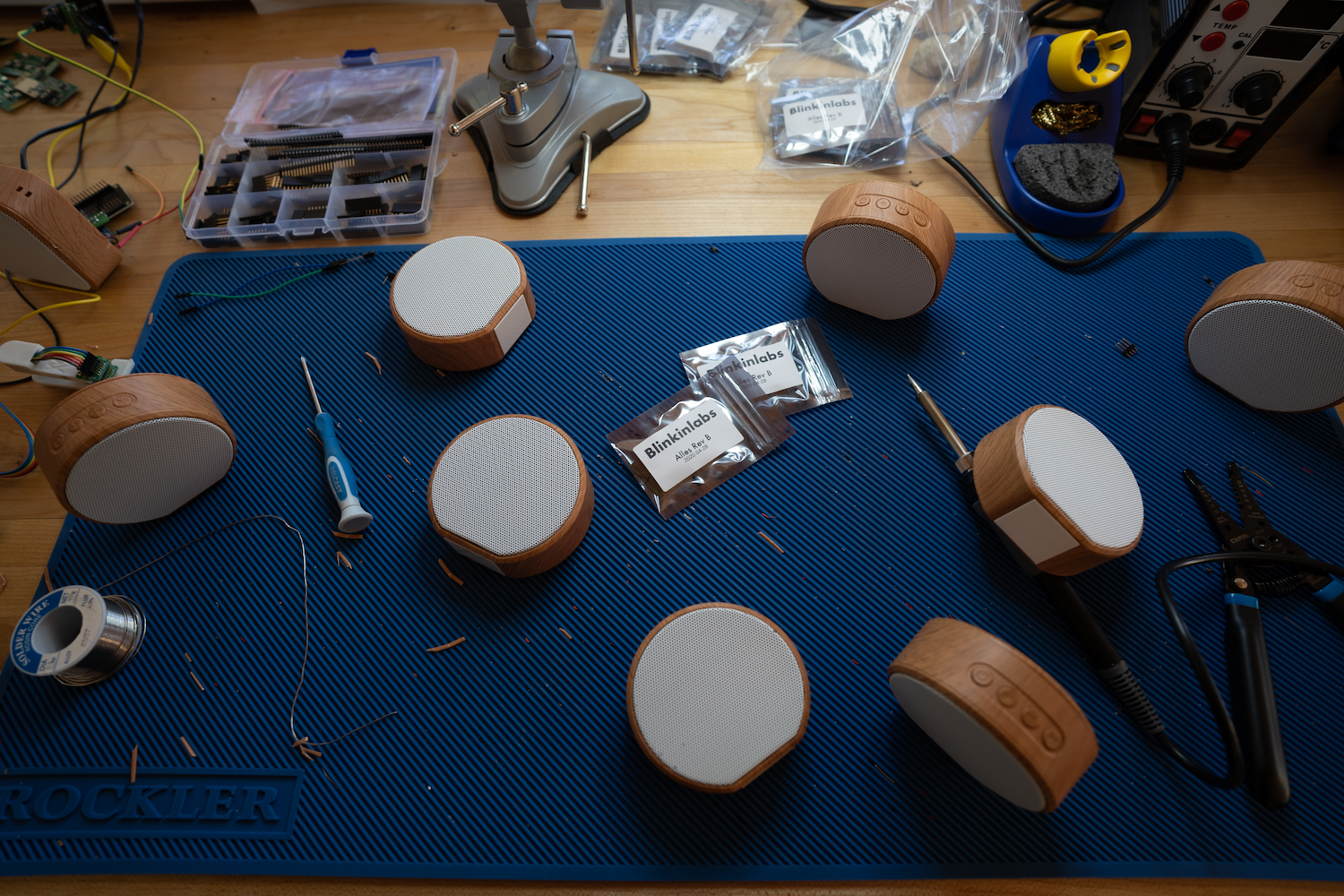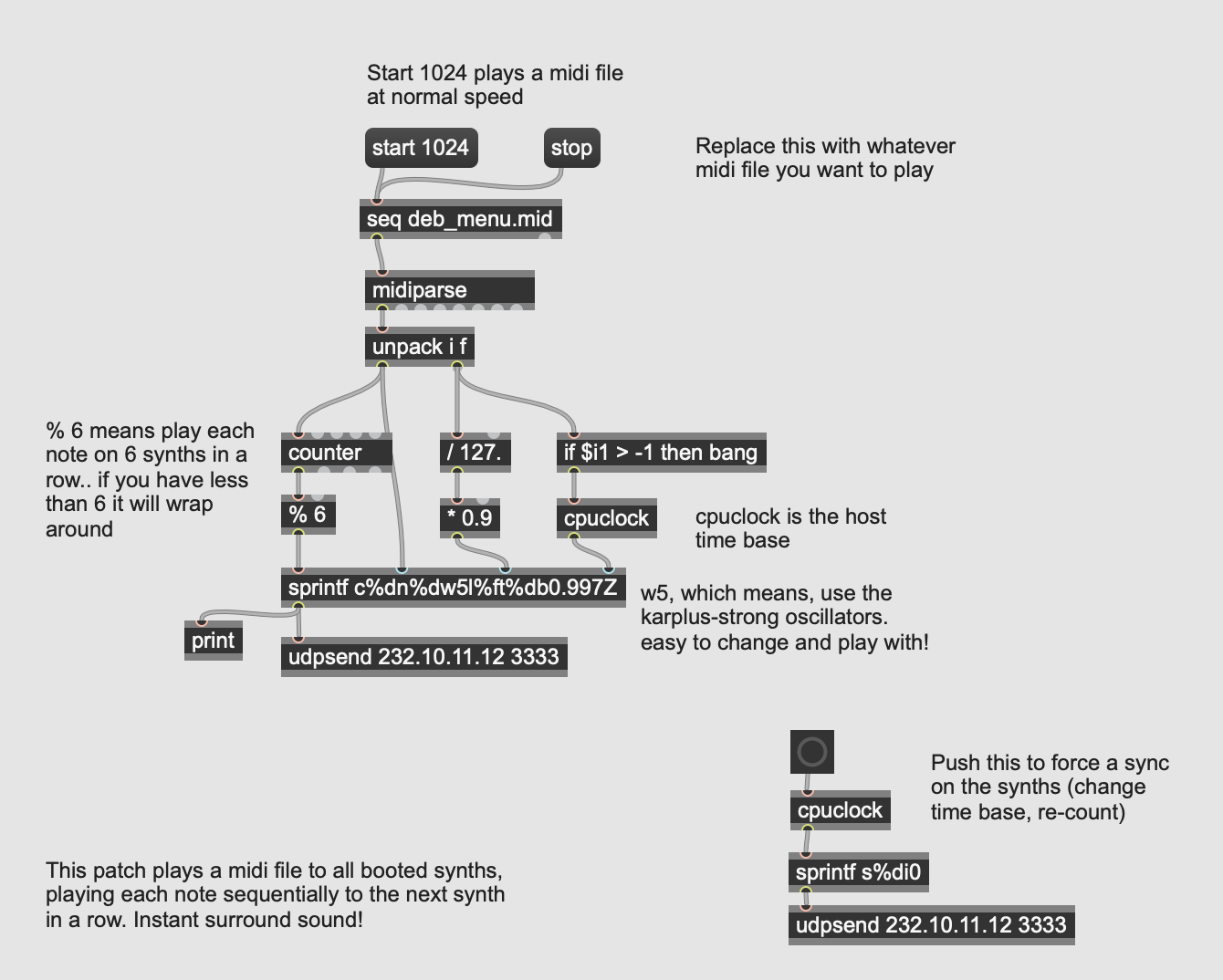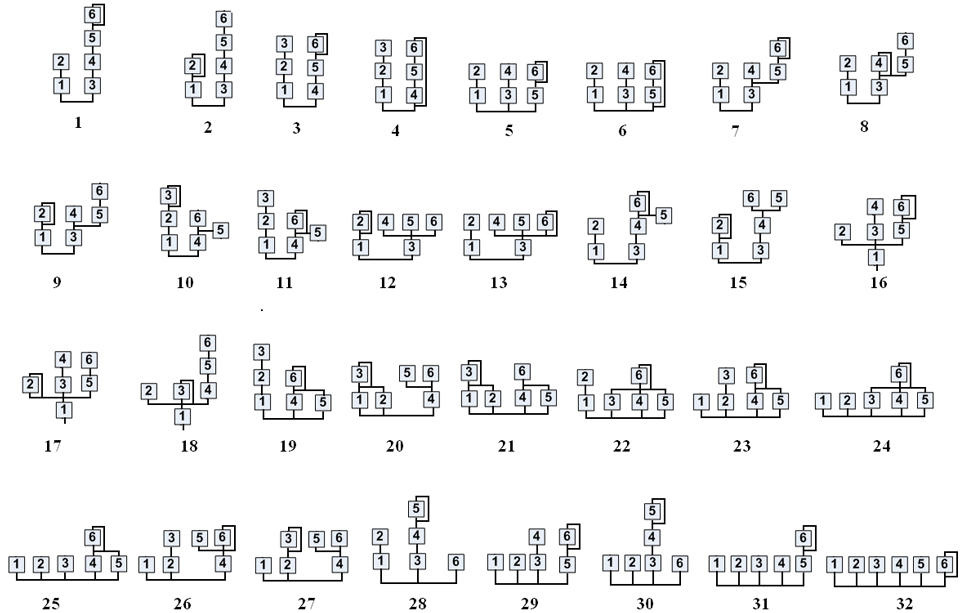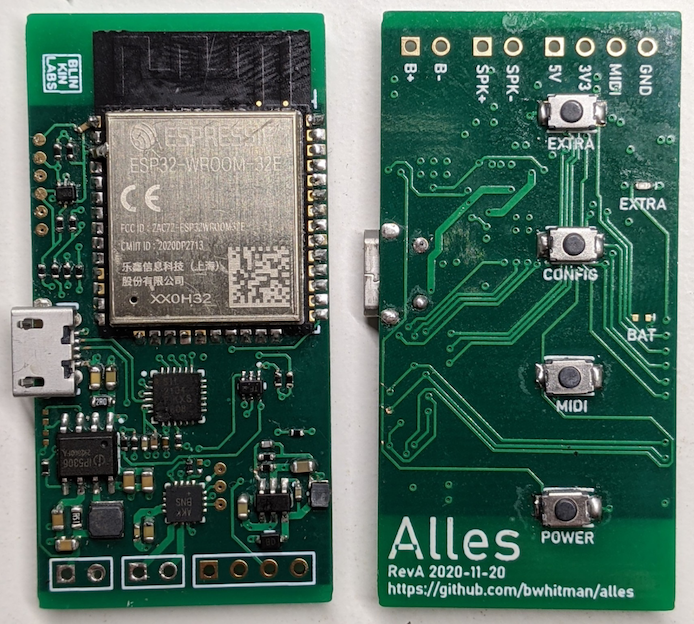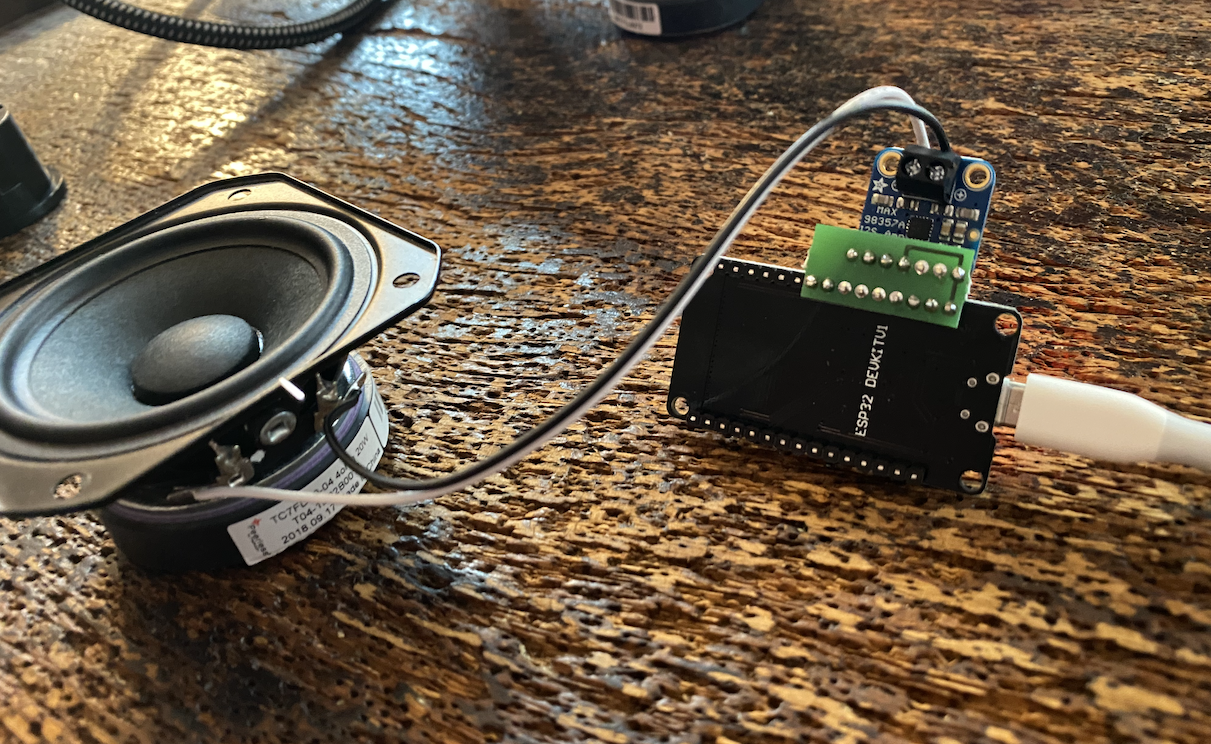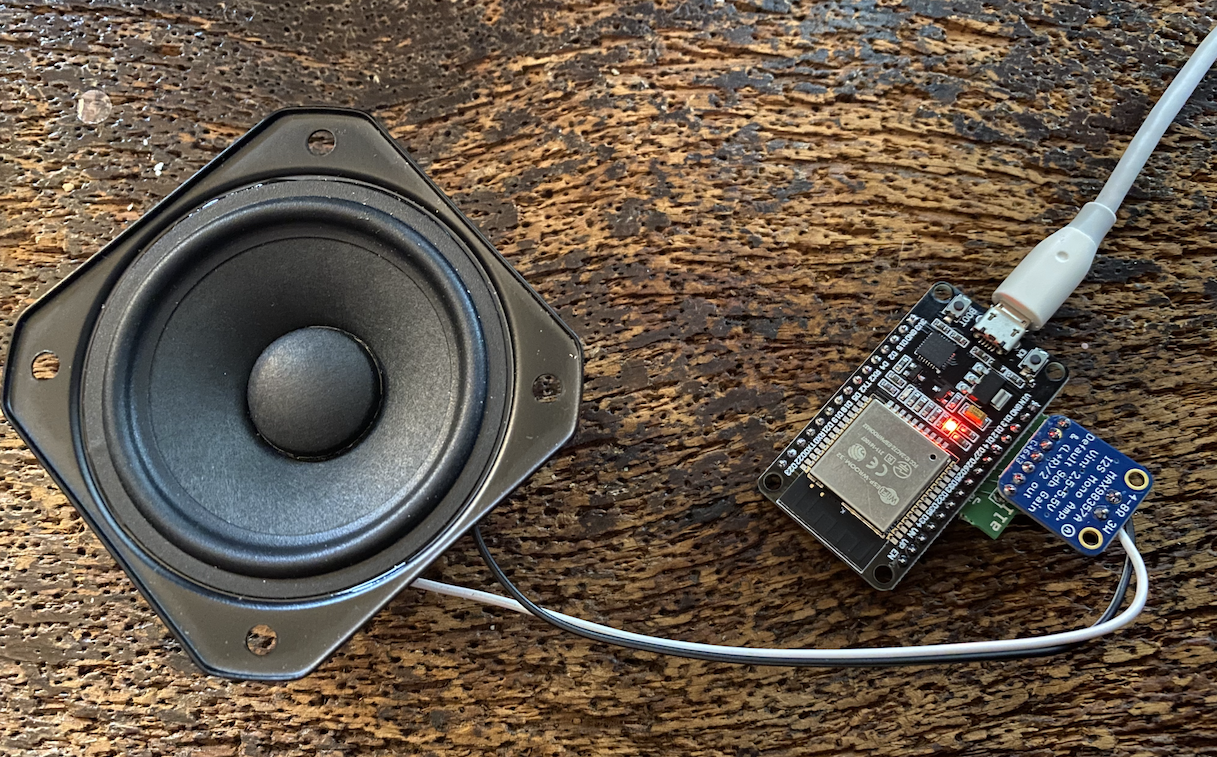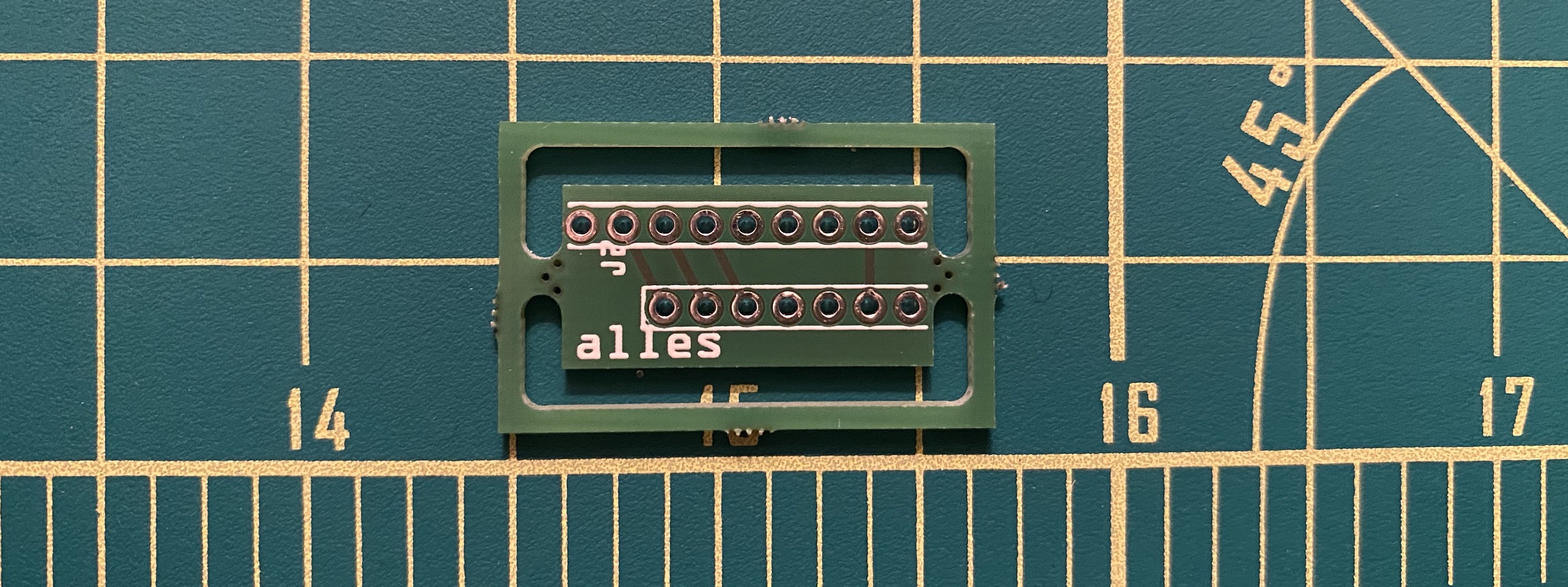Alles is a many-speaker distributed mesh synthesizer that responds over WiFi. Each synth -- there can be hundreds in a mesh -- supports up to 64 additive oscillators and 32 filters, with modulation / LFOs and ADSRs per oscillator. The mesh of speakers can be composed of any combination of our custom hardware speakers or programs running on computers. The software is open source and the hardware is cheap and easy to make -- you can build one yourself for about US$20.
The synthesizers automatically form a mesh and listen to multicast WiFi messages. You can control the mesh from a host computer using any programming language or environments like Max or Pd. You can also connect a software speaker to MIDI on your computer and have it broadcast MIDI from any device to the mesh.
We intended their first use as distributed / spatial version of an Alles Machine / Atari AMY additive synthesizer where each speaker represents up to 64 partials, all controlled as a group or individually. But you can just treat them as dozens of individual synthesizers and do whatever you want with them. It's pretty fun!
Our friends at Blinkinlabs are helping us produce small self-contained battery powered speakers with Alles built in. But in the meantime, or if you want to DIY, you can easily build your own! They're cheap to make ($7 for the microcontroller, $6 for the amplifier, speakers from $0.50 up depending on quality). And very easy to put together with hookup wire or only a few soldering points.
Want to try it today? Build a speaker yourself, or install the software version, and then read our getting started tutorial!
Each individual synthesizer supports:
- 64 oscillators, each with adjustable frequency and amplitude:
- pulse (+ adjustable duty cycle)
- sine
- saw
- triangle
- noise
- PCM, reading from a baked-in buffer of percussive and misc samples
- karplus-strong string with adjustable feedback (can have up to 2 per synth)
- An operator / algorithm-based frequency modulation synth, similar to a DX7
- Up to 32 biquad low-pass, bandpass or hi-pass filters with cutoff and resonance, can be assigned to any oscillator
- An additive partial synthesizer with an analysis front end to play back long strings of breakpoint-based sine waves
- Oscillators can be specified by frequency in floating point or midi note
- Each oscillator has 3 breakpoint generators, which can modify any combination of amplitude, frequency, duty, filter cutoff, feedback or resonance
- Each oscillator can also act as an modulator to modify any combination of parameters of another oscillator, for example, a bass drum can be indicated via a half phase sine wave at 0.25Hz modulating the frequency of another sine wave.
- Control of speaker gain and 3-band parametric EQ
- Built in patches for PCM, FM and partials
On first boot, each hardware speaker will create a captive wifi network called alles-synth-X where X is some ID of the synth. Join it (preferably on a mobile device), and you should get redirected to a captive wifi setup page. If not, go to http://10.10.0.1 in your browser after joining the network. Once you tell each synth what the wifi SSID and password you want it to join are, it will reboot. You only need to do that once per synth.
If you don't want to build or buy an Alles speaker, you can run Alles locally on your computer(s), as many as you want. As long as each copy of the software is running within the same network, they will automatically form in the mesh just like the hardware speakers. And the hardware and software speakers can be used interchangeably.
To build and run alles on a computer, simply clone this repository and
$ brew install libsoundio # if on mac
$ apt install libsoundio-dev # if on linux
$ cd alles/main
$ make
$ ./alles
$ ./alles -h # shows all the useful commandline parameters, like changing which channel/sound card, or source IP addressCheck out our brand new Getting Started page for a tutorial!
Alles can be used two ways:
-
Direct mode, where you directly control the entire mesh from a computer or mobile device: This is the preferred way and gives you the most functionality. You can control every synth on the mesh from a single host, using UDP over WiFi. You can address any synth in the mesh or all of them at once with one message, or use groups. You can specify synth parameters down to 32 bits of precision, far more than MIDI. This method can be used in music environments like Max or Pd, or by musicians or developers using languages like Python, or for plug-in developers who want to bridge Alles's full features to DAWs.
-
MIDI mode, using software Alles: A single Alles software speaker can be set up as a MIDI relay. You can then control the entire mesh using any MIDI sequencer or DAW of your choice. You are limited to directly addressing 16 synths in this mode (vs 100s), and lose some control over fine grained parameter tuning.
Alles's wire protocol is a series of numbers delimited by ascii characters that define all possible parameters of an oscillator. This is a design decision intended to make using Alles from any sort of environment as easy as possible, with no data structure or parsing overhead on the client. It's also readable and compact, far more expressive than MIDI and can be sent over network links, UARTs, or as arguments to functions or commands.
Alles accepts commands in ASCII, each command separated with a Z (you can group multiple messages in one, to avoid network overhead if that's your transport). Like so:
v0w4f440.0l0.9Z
Here's the full list:
a = amplitude, float 0-1+. use after a note on is triggered with velocity to adjust amplitude without re-triggering the note
A = breakpoint0, string, in commas, like 100,0.5,150,0.25,200,0 -- envelope generator with alternating time(ms) and ratio. last pair triggers on note off
B = breakpoint1, set the second breakpoint generator. see breakpoint0
b = feedback, float 0-1. use for the ALGO synthesis type in FM, or partial synthesis (for bandwidth) or for karplus-strong, or to indicate PCM looping (0 off, >0, on)
C = breakpoint2, set the third breakpoint generator. see breakpoint0
c = client, uint, 0-255 indicating a single client, 256-510 indicating (client_id % (x-255) == 0) for groups, default all clients
d = duty cycle, float 0.001-0.999. duty cycle for pulse wave, default 0.5
D = debug, uint, 2-4. 2 shows queue sample, 3 shows oscillator data, 4 shows modified oscillator. will interrupt audio!
f = frequency, float 0-44100 (and above). default 0. Sampling rate of synth is 44,100Hz but higher numbers can be used for PCM waveforms
F = center frequency of biquad filter. default 0.
g = modulation target mask. Which parameter modulation/LFO controls. 1=amp, 2=duty, 4=freq, 8=filter freq, 16=resonance, 32=feedback. Can handle any combo, add them together
G = filter type. 0 = none (default.) 1 = low pass, 2 = band pass, 3 = hi pass.
I = ratio. for ALGO types, where the base note frequency controls the modulators, or for the ALGO base note and PARTIALS base note, where the ratio controls the speed of the playback
L = modulation source oscillator. 0-63. Which oscillator is used as an modulation/LFO source for this oscillator. Source oscillator will be silent.
l = velocity (amplitude), float 0-1+, >0 to trigger note on, 0 to trigger note off.
n = midinote, uint, 0-127 (this will also set f). default 0
o = algorithm, choose which algorithm for the ALGO type, uint, 0-31. mirrors DX7 algorithms (-1)
O = algorithn source oscillators, choose which oscillators make up the algorithm oscillator, like "0,1,2,3,4,5" for algorithm 0
p = patch, uint, choose a preloaded PCM sample, partial patch or FM patch number for FM waveforms. See fm.h, pcm.h, partials.h. default 0
P = phase, float 0-1. where in the oscillator's cycle to start sampling from (also works on the PCM buffer). default 0
R = q factor / "resonance" of biquad filter. float. in practice, 0 to 10.0. default 0.7.
s = sync, int64, same as time but used alone to do an enumeration / sync, see alles.py
S = reset oscillator, uint 0-63 or for all oscillators, anything >63, which also resets speaker gain and EQ.
T = breakpoint0 target mask. Which parameter the breakpoints controls. 1=amp, 2=duty, 4=freq, 8=filter freq, 16=resonance, 32=feedback. Can handle any combo, add them together. Add 64 to indicate linear ramp, otherwise exponential
t = time, int64: ms since some fixed start point on your host. you should always give this if you can.
u = detune, in hertz, for partials and algorithm types, to apply after the ratio
v = oscillator, uint, 0 to 63. default: 0
V = volume, float 0 to about 10 in practice. volume knob for the entire synth / speaker. default 1.0
w = waveform, uint: [0=SINE, PULSE, SAW, TRIANGLE, NOISE, KS, PCM, ALGO, PARTIAL, PARTIALS, OFF]. default: 0/SINE
W = breakpoint1 target mask.
x = "low" EQ amount for the entire synth (Fc=800Hz). float, in dB, -15 to 15. 0 is off. default: 0
X = breakpoint2 target mask.
y = "mid" EQ amount for the entire synth (Fc=2500Hz). float, in dB, -15 to 15. 0 is off. default: 0
z = "high" EQ amount for the entire synth (Fc=7500Hz). float, in dB, -15 to 15. 0 is off. default: 0
For higher throughput, it's recommended to batch many messages into one UDP message, up to 508 bytes per message. (alles.py does this for you, optionally.)
Alles comes with its own full-featured client, written in Python. Feel free to adapt it or use it in your own clients. It can be seen as documentation, an API as well as a testing suite. You simply import alles and can control the entire mesh.
$ python3
>>> import alles
>>> alles.drums() # plays a drum pattern on all synths
>>> alles.drums(client=2) # just on one Or experiment with oscillators:
# use a a 0.25Hz sine wave at half phase (going down) to modify frequency of another sine wave
alles.reset()
alles.send(osc=1, wave=alles.SINE, vel=0.50, freq=0.25, phase=0.5) # LFO source oscillator
alles.send(osc=0, wave=alles.SINE, vel=0, bp0="0,500,0,0", bp0_target=alles.TARGET_AMP, lfo_target=alles.TARGET_FREQ, lfo_source=1)
alles.send(osc=0, note=60, vel=1.5) # Bass drum!
alles.send(osc=0, filter_freq=800, resonance=1.5) # filter it
alles.send(osc=0, note=50, vel=1.5) # note onalles.py's message command has all the parameters you can set:
# alles.message():
(osc=0, wave=-1, patch=-1, note=-1, vel=-1, amp=-1, freq=-1, duty=-1, feedback=-1, timestamp=None, reset=-1, phase=-1, \
client=-1, retries=1, volume=-1, filter_freq = -1, resonance = -1, bp0="", bp1="", bp2="", bp0_target=-1, bp1_target=-1, bp2_target=-1, mod_target=-1, \
debug=-1, mod_source=-1, eq_l = -1, eq_m = -1, eq_h = -1, filter_type= -1, algorithm=-1, ratio = -1, detune = -1, algo_source=None)To see more examples, check out our brand new Getting Started page.
By default, a message is played by all booted synthesizers. But you can address them individually or in groups using the client parameter.
The synthesizers form a mesh that self-identify who is running. They get auto-addressed client_ids starting at 0 through 255. The first synth to be booted in the mesh gets 0, then 1, and so on. If a synth is shut off or otherwise no longer sends a heartbeat signal to the mesh, the client_ids will reform so that they are always contiguous. A synth may take 10-20 seconds to join the mesh and get assigned a client_id after booting, but it will immediately receive messages sent to all synths.
The client parameter wraps around given the number of booted synthesizers to make it easy on the composer. If you have 6 booted synths, a client of 0 only reaches the first synth, 1 only reaches the 2nd synth, and a client of 7 reaches the 2nd synth (7 % 6 = 1).
Setting client to a number greater than 255 allows you to address groups. For example, a client of 257 performs the following check on each booted synthesizer: my_client_id % (client-255) == 0. This would only address every other synthesizer. A client of 259 would address every fourth synthesizer, and so on.
You can read the heartbeat messages on your host if you want to enumerate the synthesizers locally, see sync below.
Alles is not designed as a low latency real-time performance instrument, where your actions have an immediate effect on the sound. Changes you make on the host will take a fixed latency -- currently set at 1000ms -- to get to every synth. This fixed latency ensures that messages arrive to every synth -- both ESP32 based and those running on computers -- in the mesh in time to play in perfect sync, even though Wi-Fi's transmission latency varies widely. This allows you to have millisecond-accurate timing in your performance across dozens of speakers in a large space.
Your host should send along the time parameter of the relative time when you expect the sound to play. I'd suggest using the number of milliseconds since your host started, e.g. in Python:
def millis():
d = datetime.datetime.now()
return int((datetime.datetime.utcnow() - datetime.datetime(d.year, d.month, d.day)).total_seconds()*1000)If using Max, use the cpuclock object as the time parameter. If using MIDI mode, the relay synth's clock is used as a time base.
The first time you send a message with time the synth mesh uses it to figure out the delta between its time and your expected time. (If you never send a time parameter, you're at the mercy of WiFi jitter.) Further messages will be millisecond accurate message-to-message, but with the fixed latency. You can adapt time per client if you want to account for speed-of-sound delay.
The time parameter is not meant to schedule things far in the future on the clients. If you send a new time that is outside 20,000ms from its expected delta, the clock base will re-compute. Your host should be the main "sequencer" and keep track of performance state and future events.
The sync command (see alles_util.sync()) triggers an immediate response back from each on-line synthesizer. The response looks like _s65201i4c248y2, where s is the time on the client, i is the index it is responding to, y has battery status (for versions that support that) and c is the client id. This lets you build a map of not only each booted synthesizer, but if you send many messages with different indexes, will also let you figure the round-trip latency for each one along with the reliability.
UDP multicast is naturally 'lossy' -- there is no guarantee that a message will be received by a synth. Depending on a lot of factors, but most especially your wireless router and the presence of other devices, that reliability can sometimes go as low as 70%. For performance purposes, I highly suggest using a dedicated wireless router instead of an existing WiFi network. You'll want to be able to turn off many "quality of service" features (these prioritize a randomly chosen synth and will make sync hard to work with), and you'll want to in the best case only have synthesizers as direct WiFi clients. An easy way to do this is to set up a dedicated wireless router but not wire any internet into it. Connect your laptop or host machine to the router over a wired connection (via a USB-ethernet adapter if you need one), but keep your laptop's wifi or other internet network active. In your controlling software, you simply set the source network address to send and receive multicast packets from. alles_util.py has setup code for this. This will keep your host machine on its normal network but allow you to control the synths from a second interface.
If you're in a place where you can't control your network, you can mitigate reliability by simply sending messages N times. Sending multiple duplicate messages (with the same time parameter) do not have any adverse effect on the synths.
Minimal Python example:
import socket
multicast_group = ('232.10.11.12', 9294)
sock = socket.socket(socket.AF_INET, socket.SOCK_DGRAM)
def send(oscillator=0, freq=0, vel=1):
sock.sendto("v%df%fl%fZ" % (oscillator, freq, vel), multicast_group)
def c_major(octave=2):
send(oscillator=0,freq=220.5*octave)
send(oscillator=1,freq=138.5*octave)
send(oscillator=2,freq=164.5*octave)See alles.py for a better example. Any language that supports sockets and multicast can work, I encourage pull requests with new clients!
You can also easily use it in Max or Pd:
(Under construction) You can also control Alles through MIDI. You can use standard MIDI programs / DAWs to control the entire mesh from a single software Alles speaker.
CHANNEL: 1-16: sets which synth ID in the mesh you want to send the message to. 1 sends the message to all synths, and 2-16sends the message to only that ID, minus 1. So to send a message to only the first booted synth, use the second channel.
"Pgm Change Bank": set to "Bank 1" and then use PROGRAM CHANGE messages to set the tone. Bank 1 and PGM 1 is a sine wave, 2 is a square, and so on like the w parameter above. Bank 2 and onwards are the FM patches. Bank 2 and PGM 1 is the first FM patch. Bank 2 PGM 2 is the second patch. BANK X PGM Y is the (128*(X-2) + (Y-1)) patch.
Currently supported are program / bank changes and note on / offs. Will be adding more CCs soon.
We support bandlimited saw, pulse/square and triangle waves, alongside sine and noise. Use the wave parameter: 0=SINE, 1=PULSE, 2=SAW, 3=TRIANGLE, 4=NOISE. Each oscillator can have a frequency (or set by midi note), amplitude and phase (set in 0-1.). You can also set duty for the pulse type. We also have a karplus-strong type (KS=5). You can only use one KS oscillator per speaker.
Oscillators will not become audible until a velocity over 0 is set for the oscillator. This is a "note on" and will trigger any modulators or breakpoints / ADSRs set for that oscillator. Setting velocity to 0 sets a note off, which will stop modulators and also finish the breakpoint at its release pair. velocity also internally sets amplitude, but you can manually set amplitude after velocity starts a note on.
Any oscillator can modulate any other oscillator. For example, a LFO can be specified by setting oscillator 0 to 0.25Hz sine, with oscillator 1 being a 440Hz sine. Using mod_target, you can have oscillator 0 modulate frequency, amplitude, filter frequency, resonance, duty or feedback of oscillator 1. You can also add targets together, for example amplitude+frequency. Set the mod_target and mod_source on the audible oscillator (in this case, oscillator 1.) The source mod oscillator will not be audible once it is referred to as a mod_source by another oscillator. The amplitude of the modulating oscillator indicates how strong the modulation is (aka "LFO depth.")
We support lowpass, bandpass and hipass filters in Alles. Up to 32 filters can run at once on one speaker. You can set resonance and filter_freq per oscillator.
You can set a speaker-wide volume, or set the EQ of the entire speaker's output.
Alles allows you to set 3 "breakpoint generators" per oscillator. You can see these as ADSR / envelopes (and they can perform the same task), but they are slightly more capable. Breakpoints are defined as pairs (up to 8 per breakpoint) of time (specified in milliseconds) and ratio. You can specify any amount of pairs, but the last pair you specify will always be seen as the "release" pair, which doesn't trigger until note off. All other pairs previously have time in the aggregate from note on, e.g. 10ms, then 100ms is 90ms later, then 250ms is 150ms after the last one. The last "release" pair counts from ms from the note-off.
For example, to define a common ADSR curve where a sound sweeps up in volume from note on over 50ms, then has a 100ms decay stage to 50% of the volume, then is held until note off at which point it takes 250ms to trail off to 0, you'd set time to be 50ms at ratio to be 1.0, then 150ms with ratio .5, then a 250ms release with ratio 0. You then set the target of this breakpoint to be amplitude. At every synthesizer tick, the given amplitude (default of 1.0) will be multiplied by the breakpoint modifier. In Alles string parlance, this would look like "v0f220w0A50,1.0,150,0.5,250,0T1" to specify a sine wave at 220Hz with this envelope.
When using alles.py, use the string form of the breakpoint: bp0="50,1.0,150,0.5,250,0".
Every note on (specified by setting velocity / l to anything > 0) will trigger this envelope, and setting l to 0 will trigger the note off / release section.
Adding 64 to the target mask T will set the breakpoints to compute in linear, while the default is an exponential curve.
You can set a completely separate breakpoints using the second and third breakpoint operator and target mask, for example, to change pitch and amplitude at different rates.
Alles has a DX7-like algorithm generator that can have oscillator frequency modulate other oscillators, including feedback. Use wave type ALGO. You can use one of our 201 presets with the patch parameter, or build your own combination of oscillators. For example:
alles.reset()
alles.send(osc=0,ratio=0.2,amp=0.5,bp0_target=alles.TARGET_AMP,bp0="0,0,5000,1,0,0")
alles.send(osc=1,ratio=1)
alles.send(osc=2,algorithm=0,wave=alles.ALGO,algo_source="-1,-1,-1,-1,0,1")When building your own algorithm sets, assign a separate oscillator as wave=ALGO, but the source oscillators as SINE. The algorithm #s are borrowed from the DX7, but 0-indexed (so #1 here is our #0.) You don't have to use all 6 operators, any operators specified as -1 will be ignored. Note that the algo_source parameter counts backwards from operator 6. When building operators, they can have their frequencies specified directly with freq or as a ratio of the root ALGO oscillator via ratio. Each operator can have a detune parameter if using frequency ratios.
We have analyzed the partials of a group of instruments and stored them as presets baked into the speaker. Each of these patches are comprised of multiple sine wave oscillators, changing over time. The PARTIALS type has the presets.
You can generate your own partial synthesis using the wave PARTIAL -- see partials.py for an example of analyzing PCM audio to generate sequences of partials. The PARTIAL type supports amplitude modulated bandwidth replacement, modeled after the Loris algorithm.
Alles comes with a set of 67 drum-like and instrument PCM samples to use as well, as they are normally hard to render with additive or FM synthesis. You can use the type PCM and patch numbers 0-66 to explore them. Their native pitch is used if you don't give a frequency or note parameter. You can update the PCM sample bank in the firmware.
We are currently testing rev2 of a all-in-one design for Alles. The self-contained version has its own rechargable battery, 4ohm speaker, case and buttons for configuration & setup. We're hoping to be able to sell these in packs for anyone to use. More details soon.
But it's still very simple to make one yourself with parts you can get from electronics distributors like Sparkfun, Adafruit or Amazon.
To make an Alles synth yourself, you need
- ESP32 dev board (any one will do, but you want pins broken out) (pack of 2, $7.45 each). Try to get a 8MB flash on yours if you want to have over-the-air updating.
- The Adafruit I2S mono amplifier ($5.95)
- 4 ohm speaker, this one is especially nice ($9.77, but you can save a lot of money here going lower-end if you're ok with the sound quality). I also like speakers with prebuilt cases, like these bookshelf speakers.
- A breadboard, custom PCB, or just some hookup wire!
A 5V input (USB battery, USB input, rechargeable batteries direct to power input) powers both boards and speaker at pretty good volumes. A 3.7V LiPo battery will also work, but note the I2S amp will not get as loud (without distorting) if you give it 3.7V. If you want your DIY Alles to be portable, I recommend using a USB battery pack that does not do low current shutoff. The draw of the whole unit at loud volumes is around 90mA, and at idle 40mA.
Wire up your DIY Alles like this (I2S -> ESP)
LRC -> GPIO25
BCLK -> GPIO26
DIN -> GPIO27
GAIN -> I2S Vin (i jumper this on the I2S board)
SD -> not connected
GND -> GND
Vin -> Vin / USB / 3.3 (or direct to your 5V power source)
Speaker connectors -> speaker
You don't need this PCB made to build a DIY Alles! -- it will work with just hookup wire. But if you're making a lot of DIY Alleses want more stability, I had a tiny little board made to join the boards together, like so:
This assumes you're using the suggested ESP32 dev board with its pin layout. If you use another one, you can probably change the GPIO assignments in alles.h. Fritzing file in the pcbs folder of this repository, and it's here on Aisler. This is a lot more stable and easier to wire up than snipping small bits of hookup wire, especially for the GAIN connection.
If you are using your own dev board and it has less than 8MB of flash (4MB is common), first overwwrite alles_partitions.csv with the contents ofalles_4mb_partitions.csv -- this will disable the OTA firmware upgrading, but will otherwise work fine. The binary for Alles is almost 4MB total and OTA needs space for two copies to be stored on the flash.
Alles is completely open source, and can be a fun platform to adapt beyond its current capabilities.
You can upgrade the firmware or write your own using the USB connection. See the guide on flashing a hardware Alles speaker (either DIY or one of ours).
Alles comes prebaked with some converted DX7 patches from the learnFM project. It also comes prebaked with a long buffer of PCM samples, mostly ones that are more complex to synthesize using additive oscillators, for example, closed hi-hats or cymbals. If you build your own firmware, you're free to change both. In amy_headers.py, partials.py and fm.py you'll see functions that can regenerate pcm.h, fm.h, partials.h for you, by giving it other FM patches, PCM buffers or even SoundFonts.
- Alles would not be possible without the help of DAn Ellis, who helped me with most of the oscillator stack, a lot of deep dives into our algorithm synth, and many great ideas / fixes on the ESP32 code.
- Douglas Repetto
- Ralph Levien for his work on MSFA which gave us a lot of hints for our FM implementation
- mark fell
- esp32 WiFi Manager
- kyle mcdonald
- Matt Mets / Blinkinlabs
- nodemcu-pyflasher
power buttonwifi setup should ask for default power saving / latency -- no for nowremove distortion at higher amplitudes for mixed sine wavesFMshould synths self-identify to each other? would make it easier to use in Maxsee what you can do about wide swings of UDP latency on the netgear routerenvelopes / note on/offs / LFOsconfirm UDP still works from Max/Pdbandlimit the square/saw/triangle oscillatorskarplus-strongwifi hotspot mode for in-field setupbroadcast UDP for multiplesdropped packetssync and enumerate across multiple devicesaddresses / communicate to one or groups, like "play this on half / one-quarter / all"do what i can about timing / jitter - sync time? timed messages?case / battery setupoverloading the volume (I think only on FM) crashesUDP message clicks- more MIDI parameters
- desktop USB flasher
- BT / app based config instead of captive portal (later)
